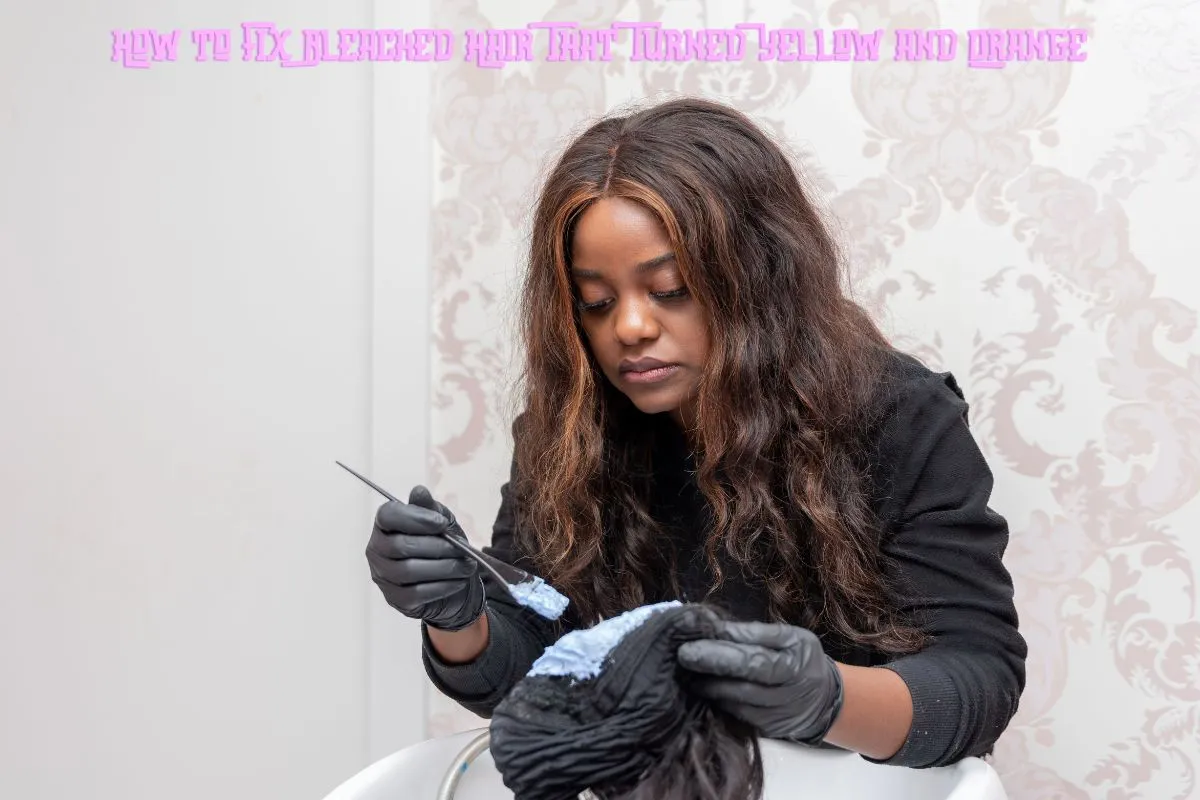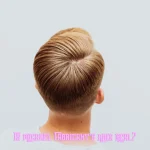Bleaching your hair can be an exciting way to achieve a fresh, new look. However, anyone who’s bleached their hair knows it doesn’t always turn out perfectly. Sometimes, instead of the perfect icy blonde, you end up with a brassy yellow or orange hue. This can be frustrating, but don’t worry—it’s a fixable problem! Whether you’ve gone through this situation yourself or you’re just looking to learn more about hair care, this guide will walk you through the best ways to fix bleached hair that’s turned yellow or orange.
Why Does Bleached Hair Turn Yellow or Orange?
Bleaching works by stripping your hair of its natural pigments. Dark hair often contains a lot of red and yellow undertones, and when the bleach doesn’t fully lift these pigments, you’re left with a brassy effect. Yellow tones occur when your hair is light but not yet platinum, while orange tones happen when the bleach has lifted some, but not all, of the darker pigments.
Personal Anecdote:
I remember the first time I bleached my hair. I had this vision of a silvery, platinum look, but after rinsing out the bleach, I was horrified to see patches of yellow and orange. I panicked and thought I had ruined my hair for good. However, after doing some research and consulting a few experts, I realized there were several ways to correct it without further damage.
Here’s a table summarizing the key points about fixing bleached hair that turned yellow or orange, making it easy for readers to understand the solutions and steps:
| Problem | Solution | Why It Works |
|---|---|---|
| Yellow Tones | Use purple shampoo. | Purple neutralizes yellow tones on the color wheel. |
| Orange Tones | Use blue shampoo. | Blue neutralizes orange tones on the color wheel. |
| Brassiness | Apply a toner or hair gloss. | Toners deposit color pigments to neutralize unwanted hues. |
| Dry, Damaged Hair | Use deep conditioning treatments or hair masks. | Repairs and hydrates weakened hair after bleaching. |
| Brittle Hair | Try Olaplex or protein treatments. | Rebuilds hair bonds and restores strength. |
| Heat Damage | Avoid heat styling; use heat protectants if necessary. | Minimizes further breakage and dryness in bleached hair. |
| Uneven or Severe Brassiness | Consult a professional colorist. | Provides tailored solutions and professional-grade products. |
Comparison of Shampoos for Brassiness
| Shampoo Type | Best For | How It Works |
|---|---|---|
| Purple Shampoo | Yellow tones | Neutralizes yellow with purple pigments. |
| Blue Shampoo | Orange tones | Neutralizes orange with blue pigments. |
Hair Repair Treatments
| Treatment | Benefits | How to Use |
|---|---|---|
| Deep Conditioning | Hydrates and repairs damaged hair. | Apply weekly; leave on for 10–20 minutes. |
| Olaplex | Rebuilds broken hair bonds. | Use as directed, typically after bleaching or coloring. |
| Protein Treatments | Restores strength and elasticity. | Apply monthly or as needed for damaged hair. |
Heat Styling Tips for Bleached Hair
| Tip | Why It’s Important |
|---|---|
| Air Dry | Prevents further damage from heat tools. |
| Use Heat Protectant | Shields hair from heat damage if styling is necessary. |
| Limit Heat Tools | Reduces breakage and maintains hair health. |
When to See a Professional
| Scenario | Why It’s Important |
|---|---|
| Severe Brassiness | A professional can apply toners or glosses for precise results. |
| Uneven Color | A colorist can correct patchiness and achieve a uniform shade. |
| Extreme Damage | Professionals can recommend treatments to restore hair health. |
This table format provides a clear, easy-to-understand breakdown of how to fix bleached hair that turned yellow or orange. It’s perfect for readers looking to quickly grasp the key points and take action!
Step-by-Step: How to Fix Yellow and Orange Bleached Hair
1. Use a Purple Shampoo
Purple shampoo is one of the easiest and most effective ways to tone yellow hair. Since purple is opposite to yellow on the color wheel, it neutralizes brassy tones. Simply swap your regular shampoo for a purple one a few times a week.
Expert Tip: Celebrity hairstylist Guy Tang advises, “If your hair is brassy, don’t panic! Use a purple or blue-based toner to neutralize the unwanted yellow or orange tones.”
Personal Anecdote: I used purple shampoo consistently after my bleach fiasco, and within a week, I saw a noticeable improvement in the yellow tones. Just be careful not to overuse it, or your hair might end up with a lavender tint!
2. Blue Shampoo for Orange Tones
If your hair leans more towards orange than yellow, you’ll need a blue shampoo instead. Blue cancels out orange tones and is particularly helpful for brunettes who’ve bleached their hair but haven’t lifted enough of the darker pigments.
Expert Tip: Matrix Creative Director George Kukavica suggests, “When using a toner, start with a lower concentration and gradually increase it until you achieve your desired shade. This will help prevent your hair from becoming too ashy.”
3. Try a Toner or Hair Gloss
Toners are another great option for neutralizing yellow or orange hair. They work by depositing color pigments into the hair to neutralize brassiness.
Expert Tip:
Jennifer Lopez’s colorist, Tracey Cunningham, advises, “Always use a sulfate-free shampoo and conditioner to maintain your color. Sulfates can strip your hair of color and leave it looking brassy.”
4. Deep Conditioning Treatments
Bleaching weakens your hair’s structure, so it’s essential to repair and strengthen your strands. Deep conditioning treatments or hair masks are a must after bleaching.
Expert Tip: Celebrity hairstylist John Frieda recommends, “A deep conditioning treatment can help hydrate your hair and prevent further damage. Look for products that contain ingredients like shea butter or coconut oil.”
Personal Anecdote: When my hair turned brassy, I followed up my purple shampoo routine with a weekly deep conditioning treatment. It not only helped repair the damage but also made my hair feel soft and healthy again.
5. Olaplex or Protein Treatments
If your hair feels brittle or looks dull after bleaching, consider using products like Olaplex, which helps rebuild the bonds in damaged hair.
Expert Tip: Olaplex Founder Craig Walker states, “If your hair is damaged from bleaching, it’s important to use products that repair the bonds in your hair. Olaplex is a great option for rebuilding damaged hair.”
6. Avoid Heat Styling
Bleached hair is already weakened, and adding heat can cause further breakage and dryness.
Study Insight: The study “The Impact of Heat Styling on Bleached Hair” warns that frequent heat styling on bleached hair can lead to increased hair damage and split ends.
Personal Anecdote: One of the biggest mistakes I made after bleaching my hair was using a flat iron daily, which only made the damage worse. Now, I air-dry my hair and use heat-free styling methods.
7. Seek Professional Help
If at-home treatments aren’t giving you the desired results, don’t hesitate to consult a professional.
Expert Tip: Redken Global Artistic Director David Mallett says, “If you’re unsure about using a toner, consult with a professional colorist. They can help you choose the right product and technique for your hair.”
Studies on Fixing Bleached Hair
- “The Effects of Bleaching on Hair Structure and Integrity”
This study examines how bleaching affects the strength and texture of hair and offers insights into minimizing long-term damage. (Journal of Cosmetic Science) - “The Use of Purple Shampoos to Neutralize Brassy Tones in Bleached Hair”
Research on the effectiveness of purple shampoos for neutralizing unwanted yellow tones in bleached hair. (International Journal of Cosmetology) - “The Role of Protein Treatments in Repairing Damaged Bleached Hair”
This study highlights the benefits of protein treatments for strengthening hair and preventing breakage. (Journal of Hair Therapy & Transplantation) - “The Impact of Heat Styling on Bleached Hair”
Investigates how heat styling can exacerbate damage to already-bleached hair and offers best practices for heat protection. (Journal of Dermatological Research)
Final Thoughts
If you find yourself with yellow or orange-bleached hair, don’t worry—there are solutions! From purple shampoos to toners and deep conditioning treatments, you can restore your hair to a beautiful shade without causing further damage. With a little patience and the right products, your hair will be back on track in no time.
And remember, sometimes the best option is to seek the help of a professional colorist to get the exact results you want. With their expertise and access to professional-grade products, they can provide personalized solutions that are difficult to achieve at home.
Key Takeaways:
- Use purple shampoo for yellow tones and blue shampoo for orange tones.
- Toners and hair glosses can neutralize brassiness effectively.
- Deep conditioning and protein treatments repair and strengthen bleached hair.
- Avoid heat styling to prevent further damage.
- Consult a professional for personalized advice and treatments.
With this guide, you’re ready to tackle brassy bleached hair and restore it to its former glory. Happy hair healing!




